You spend a third of your life asleep, which makes nighttime the perfect opportunity to care for your skin. While you rest, your skin naturally repairs itself, and the right products can boost that process. By using targeted treatments, hydrating moisturizers, and overnight masks, you can wake up with smoother, healthier, and more well-groomed skin.
A simple routine at night can make a noticeable difference. Cleansing away the day’s buildup, applying nourishing serums, and sealing in moisture with a cream or mask ensures your skin has what it needs to recover. Overnight masks, in particular, work longer and deeper than a quick daytime product, giving you visible results by morning.
You don’t need dozens of steps to see results. By focusing on hydration, repair, and protection while you sleep, you give your skin the tools to look refreshed and balanced when you wake up.
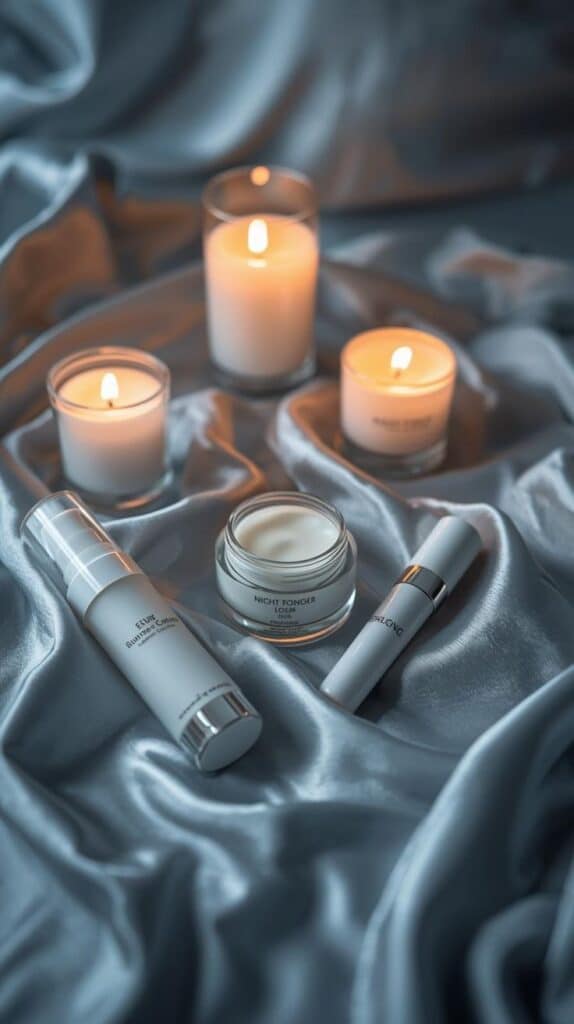


Key Takeaways
- Nighttime is the best time to repair and improve skin health
- A consistent routine with the right products delivers visible results
- Overnight masks enhance hydration and leave skin well-groomed
Why Nighttime Skincare Matters
Your skin uses the hours of rest to repair itself, defend against damage from the day, and restore balance. At night, the right care helps you reduce the visible effects of stress, pollution, and UV exposure while supporting natural processes like skin cell turnover.
Skin Repair and Renewal While You Sleep
When you sleep, your skin shifts into recovery mode. This is when skin cell turnover increases, meaning old or damaged cells are replaced with new ones. Supporting this process with nourishing products helps you wake up with smoother and more radiant skin.
Night creams and serums often contain ingredients like retinol, peptides, or hyaluronic acid. These work best when your skin is not exposed to sunlight, since some active ingredients can break down in UV light.
Think of nighttime as the window when your skin is most receptive. By applying targeted treatments before bed, you give your skin the tools it needs to repair itself more effectively.
The Impact of Environmental Stressors
During the day, your skin faces constant stress from pollution, UV exposure, and even weather changes. These factors can lead to free radical damage, clogged pores, and dullness over time.
At night, your skin finally gets a break from these external triggers. This is the ideal time to use products with antioxidants, which help neutralize damage caused by daily exposure to harmful elements.
A simple way to protect your skin is to cleanse thoroughly before bed. Removing dirt, sweat, and pollutants allows your skin barrier to recover and prevents irritation or breakouts.
| Stressor | Daytime Effect | Nighttime Focus |
|---|---|---|
| Pollution | Clogs pores, dulls skin | Deep cleansing, antioxidants |
| UV exposure | DNA damage, premature aging | Repair with retinoids |
| Weather changes | Dryness, irritation | Hydration and barrier repair |
The Role of Beauty Sleep
Quality rest directly affects how your skin looks. When you’re asleep, your body increases blood flow to the skin, which helps deliver nutrients and oxygen more efficiently. This circulation boost is one reason you may notice more radiant skin after a good night’s sleep.
Lack of sleep, on the other hand, can slow down repair processes and lead to dullness, puffiness, or uneven tone. This is why the term beauty sleep isn’t just a saying—it reflects real changes in your skin’s health.
Pairing consistent sleep habits with a solid nighttime routine maximizes results. You support both internal processes and external care, giving your skin the best chance to recover overnight.
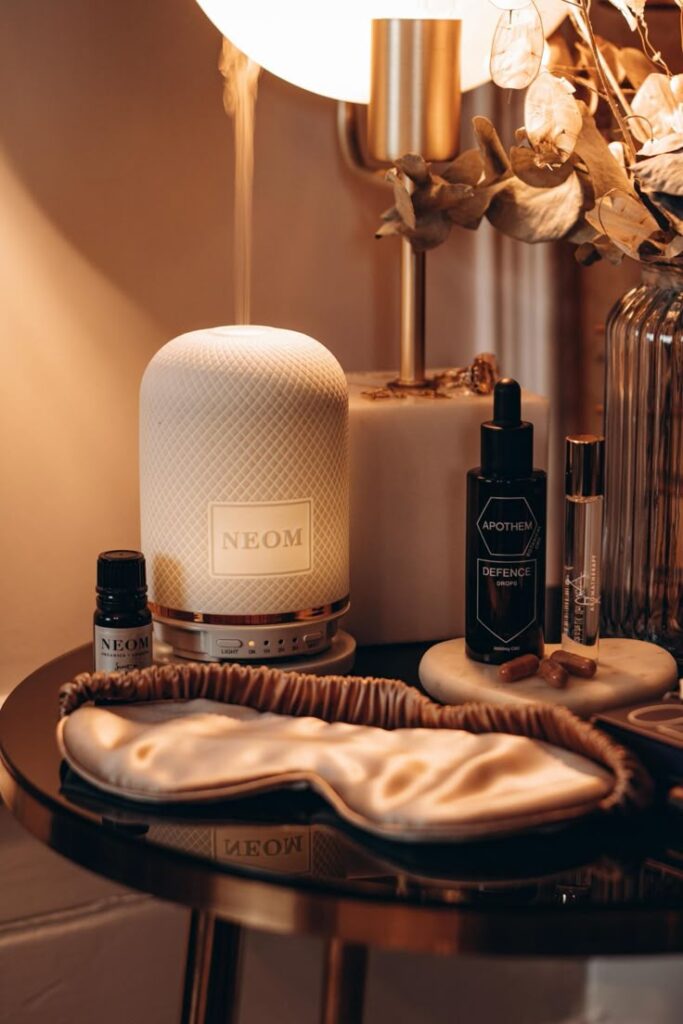

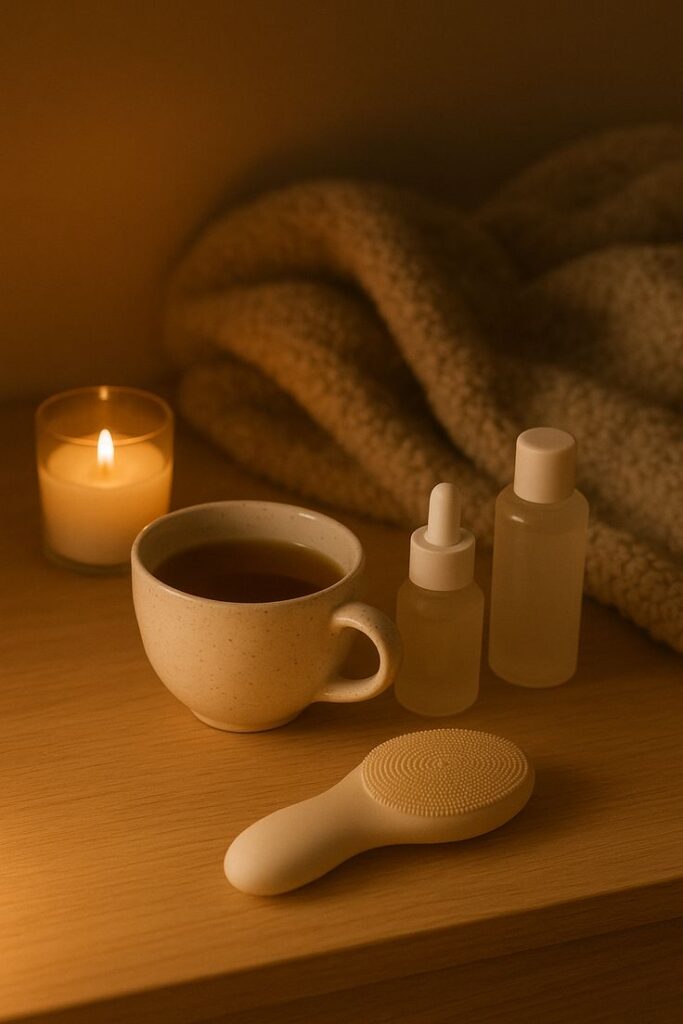
Building Your Nighttime Skincare Routine
A well-planned evening routine clears away buildup, restores balance, and prepares your skin to absorb treatments more effectively. Paying attention to cleansing, exfoliation, and hydration ensures your skin stays healthy and looks refreshed the next morning.
Step 1: Makeup Removal and Double Cleansing
If you wear makeup or sunscreen, removing it completely is the first step. A single face wash often leaves behind residue that can clog pores. Using a makeup remover such as micellar water or cleansing balm helps break down foundation, mascara, and sunscreen.
After this, follow with an oil cleanser to dissolve leftover oils and impurities. This is especially useful for heavy or waterproof makeup. Then, use a water-based face wash to lift away sweat, dirt, and anything the oil cleanser didn’t catch.
This two-step method, known as double cleansing, ensures your skin is fully clean without stripping its natural barrier. It helps reduce breakouts, improves texture, and allows serums or moisturizers to penetrate more effectively.
Step 2: Gentle Cleansers for All Skin Types
Not every cleanser works for every skin type, so choosing the right one matters. A gentle cleanser should remove dirt and oil without leaving your skin tight or dry. Look for sulfate-free formulas that keep the skin’s barrier intact.
- Dry skin: Cream or lotion cleansers provide hydration.
- Oily skin: Gel cleansers help control excess sebum.
- Sensitive skin: Fragrance-free, mild cleansers reduce irritation.
- Combination skin: A balanced formula works for both dry and oily areas.
Even if you double cleanse, the second step should always be mild. Harsh cleansers can cause redness, flaking, or worsen oil production. A balanced cleanser keeps your skin comfortable and ready for the next step.
Step 3: Exfoliation for a Fresh Canvas
Exfoliation removes dead skin cells and helps prevent clogged pores. You should not exfoliate every day, but adding it 2–3 times per week can make your skin smoother and brighter.
There are two main types:
- Physical exfoliators: Scrubs with small particles. These can be too harsh for sensitive skin.
- Chemical exfoliants: Products with AHA (like glycolic or lactic acid) or BHA (like salicylic acid). These dissolve dead skin cells more evenly and are often better tolerated.
Chemical exfoliants can also target specific concerns. AHAs improve dullness and uneven tone, while BHAs penetrate pores to reduce blackheads and breakouts. Always follow with hydration to avoid dryness.
Step 4: Hydrating Toners and Prepping the Skin
After cleansing and exfoliating, your skin benefits from a hydrating toner. Unlike older formulas that dried out the skin, modern toners deliver moisture and prepare your skin to absorb serums and creams more effectively.
Look for toners with ingredients like hyaluronic acid, glycerin, or aloe. These help replenish hydration and calm the skin after cleansing.
For oily or acne-prone skin, lightweight toners balance oil without clogging pores. For dry or sensitive skin, richer hydrating toners reduce tightness and irritation. Applying toner with your hands or a cotton pad ensures even coverage and sets the stage for the rest of your routine.


Targeted Treatments and Serums
Using targeted treatments at night allows your skin to absorb active ingredients more effectively. By focusing on the right serums, you can support repair, hydration, and renewal while addressing specific concerns like fine lines, uneven tone, or dryness.
Choosing the Right Active Ingredients
When selecting a nighttime serum, pay close attention to the active ingredients. Retinol is one of the most researched options, known for improving cell turnover and supporting collagen production. It can help reduce fine lines and smooth texture over time.
If your skin is sensitive, niacinamide is a gentler choice. It helps calm redness, strengthen the skin barrier, and regulate oil production. Vitamin C is another option, often used in the morning, but certain stable forms can also be applied at night to brighten skin and even tone.
Peptides are useful if you want to support firmness. They signal your skin to produce more collagen, which can gradually improve elasticity. Pairing peptides with a nourishing moisturizer helps lock in hydration and maximize their effect.
Addressing Specific Skin Concerns
Different concerns call for different treatments. For acne-prone skin, look for serums with retinol or niacinamide since both help reduce breakouts and post-acne marks. For dry or dehydrated skin, hyaluronic acid serums provide lightweight hydration without clogging pores.
If you struggle with dullness or uneven tone, vitamin C or niacinamide can help brighten your complexion. For early signs of aging, peptides and retinol are often recommended because they target fine lines and loss of firmness.
Here’s a quick guide:
| Concern | Ingredient to Try | Benefit |
|---|---|---|
| Fine lines | Retinol, Peptides | Boosts collagen, smooths skin |
| Redness/irritation | Niacinamide | Calms and strengthens barrier |
| Dullness | Vitamin C | Brightens and evens tone |
| Dryness | Hyaluronic Acid | Hydrates and plumps |
Eye Creams and Delicate Areas
The skin around your eyes is thinner and more delicate, so it needs special care. Regular face serums may be too strong for this area, which is why an eye cream can be useful.
Look for formulas with peptides to support firmness or niacinamide to reduce discoloration. If puffiness is your main concern, ingredients like caffeine can help temporarily improve the appearance of under-eye bags.
Apply eye cream gently with your ring finger to avoid tugging. Use only a small amount and focus on the orbital bone area. This helps deliver benefits without overwhelming the skin or causing irritation.

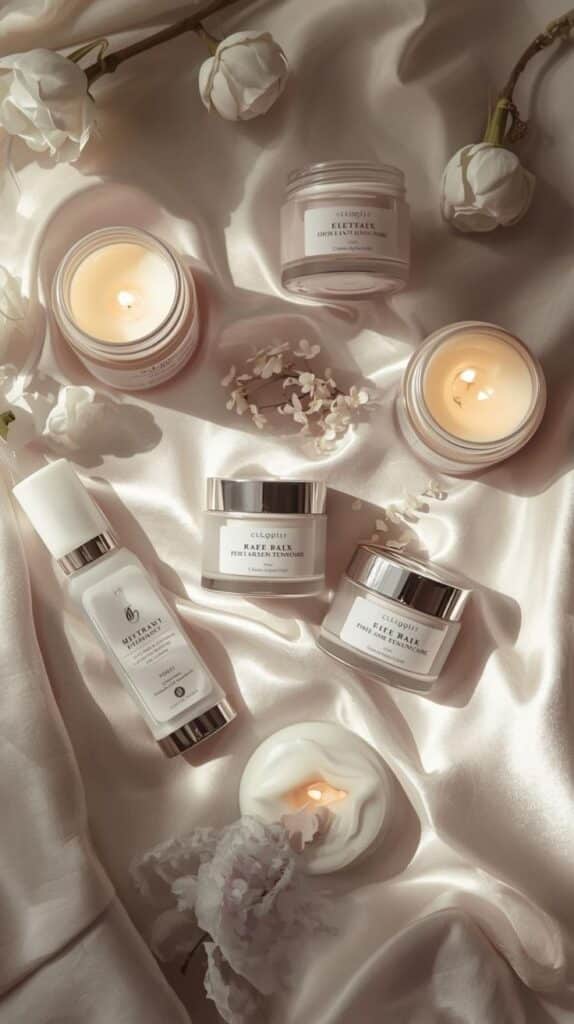
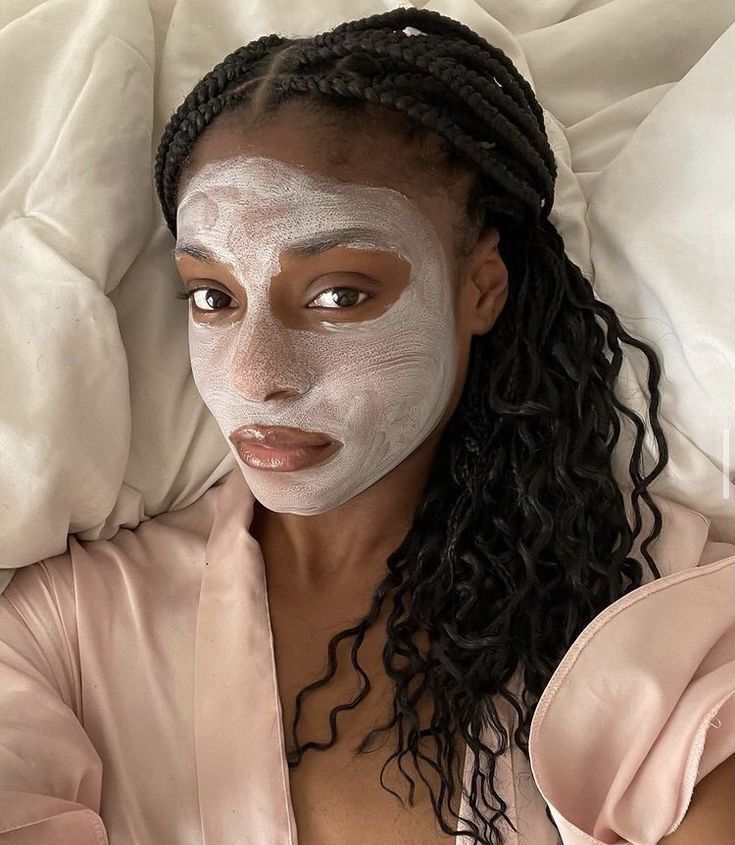
Moisturizers and Hydration Boosters
Your nighttime routine works best when you focus on products that lock in moisture, deliver hydrating ingredients deep into the skin, and keep your skin barrier strong. Choosing the right formulas helps you wake up with smoother, softer, and more resilient skin.
Selecting the Best Nighttime Moisturizer
At night, your skin repairs itself, so a moisturizer that supports hydration and recovery is key. Look for richer creams or overnight masks if you have dry or dehydrated skin, while lighter gel-cream textures suit combination or oily skin.
If you have sensitive skin, fragrance-free options reduce the risk of irritation. A good nighttime moisturizer should feel comfortable, not heavy, and leave your skin supple by morning.
Some people prefer layering a hydrating serum under their moisturizer for extra hydration. This can be especially helpful in colder months or if your skin feels tight after cleansing.
Hydrating Ingredients to Look For
Hydration boosters work by attracting and holding water in your skin. Hyaluronic acid is one of the most effective, binding water to keep your skin plump. Glycerin performs a similar role and is often combined with other humectants.
For replenishing oils, squalane provides lightweight moisture without clogging pores. It’s especially useful if you want hydration without a greasy finish.
Here’s a quick list of key ingredients and their benefits:
| Ingredient | Benefit | Best For |
|---|---|---|
| Hyaluronic Acid | Binds water, plumps skin | Dehydrated, all skin |
| Glycerin | Maintains hydration balance | Dry, sensitive skin |
| Squalane | Lightweight oil replacement | Oily, combination skin |
| Ceramides | Strengthen skin barrier | Dry, sensitive skin |
Choosing products with a mix of these ensures your skin gets both immediate hydration and long-term support.
Strengthening the Skin Barrier
A healthy skin barrier locks in hydration and keeps irritants out. When it’s weakened, you may notice dryness, redness, or sensitivity. Moisturizers with ceramides are especially effective because they restore the natural lipids that hold skin cells together.
Pairing ceramides with humectants like hyaluronic acid helps your skin stay hydrated while repairing its protective layer. For very dry skin, layering a ceramide cream over a hydrating serum can make a noticeable difference.
If your skin feels tight or flaky, avoid harsh exfoliants at night. Instead, focus on barrier-supporting formulas that calm and strengthen your skin while you sleep. This approach helps reduce sensitivity and improves overall hydration over time.
Overnight Masks: The Secret to Well-Groomed Skin
An overnight mask works while you sleep by sealing in hydration and supporting skin repair. With the right formula, you can target dryness, dullness, or uneven texture without adding extra steps to your morning routine.
How Overnight Face Masks Work
When you apply an overnight face mask, it forms a thin layer on your skin that prevents water loss. This helps maintain hydration levels through the night when skin naturally loses moisture.
Your skin also goes into repair mode while you sleep. Overnight masks take advantage of this process by delivering active ingredients like antioxidants, peptides, or ceramides more effectively.
Unlike a rinse-off mask, these products stay on for several hours. That extended contact time allows ingredients to penetrate deeper, which can make them more effective than a quick 10-minute treatment.
Some products, such as Augustinus Bader The Face Cream Mask or True Botanicals Moisture Lock Overnight Mask, are designed to support barrier repair. Others, like hydrating gel masks, focus mainly on boosting water content for a plumper look in the morning.
Types of Overnight Masks
Overnight masks come in different textures and finishes, so you can choose based on your skin’s needs.
- Gel-based masks: Lightweight, cooling, and best for oily or combination skin.
- Cream-based masks: Richer textures that suit dry or mature skin.
- Exfoliating masks: Contain gentle acids to smooth rough patches and brighten tone.
- Barrier-repair masks: Focus on strengthening the skin barrier with lipids and ceramides.
Some formulas, like Biodance Bio-Collagen Real Deep Mask, emphasize firming and elasticity. Others target calming sensitivity with ingredients such as aloe or chamomile.
If you’re prone to breakouts, you can still use overnight masks. Look for non-comedogenic versions with niacinamide or green tea to help balance oil without clogging pores.
Top Ingredients for Overnight Masks
The effectiveness of an overnight mask depends largely on its ingredient list.
- Hyaluronic acid: Attracts and holds water for deep hydration.
- Niacinamide: Supports barrier function and helps even out skin tone.
- Ceramides: Strengthen the skin’s natural barrier and reduce moisture loss.
- Peptides: Encourage skin repair and firmness.
- Antioxidants (vitamin C, green tea, resveratrol): Protect against environmental damage.
Some formulas combine several of these for broader results. For example, True Botanicals blends plant-based oils with ceramides for hydration and repair, while Augustinus Bader uses its proprietary complex to support cellular renewal.
If you want brighter skin, look for masks with gentle exfoliants like lactic acid. For sensitive skin, stick to calming ingredients such as oat extract or squalane.

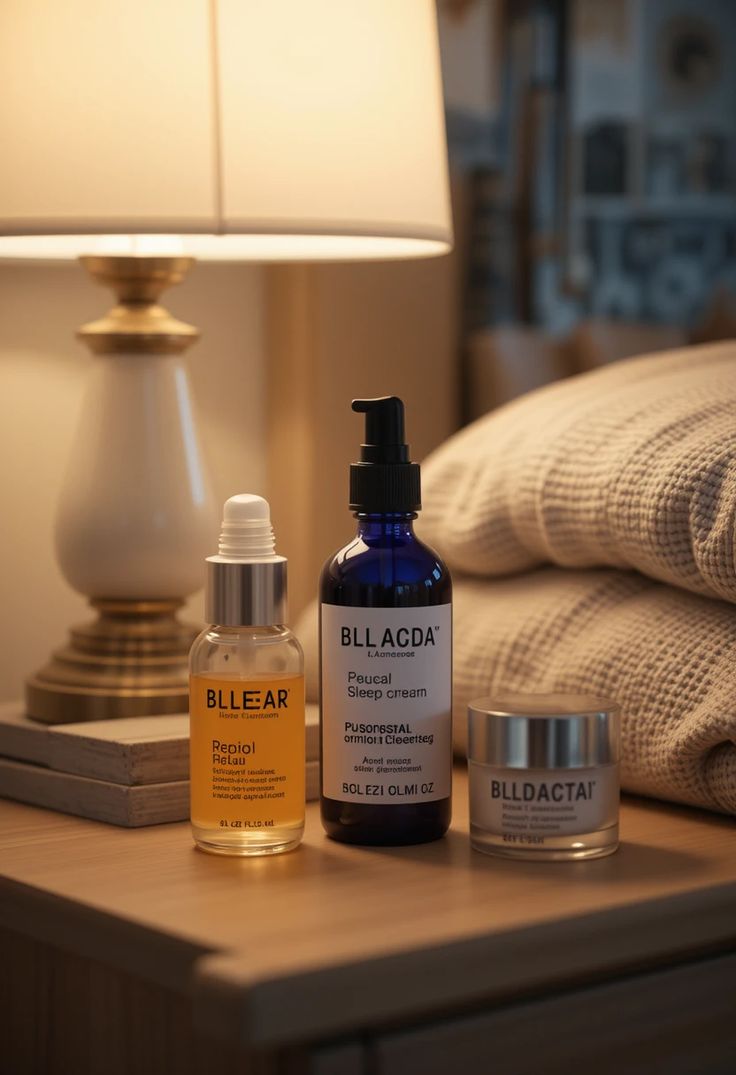
Tips for Maximizing Your Nighttime Skincare Results
Your night skincare routine works best when it matches your skin’s needs, supports your daily habits, and avoids common missteps that reduce effectiveness. Paying attention to these details helps your skin absorb products properly and look healthier in the morning.
Adapting Your Routine to Skin Type
Your skin type should guide the products you choose. If you have oily skin, lightweight gel cleansers and oil-free moisturizers help keep pores clear without stripping the skin. For dry skin, richer creams and hydrating serums with ingredients like hyaluronic acid or ceramides provide lasting moisture overnight.
Combination skin benefits from a balanced approach. You might use a lighter moisturizer on the T-zone and a more nourishing one on drier areas. Sensitive skin often does well with fragrance-free and minimal-ingredient formulas to reduce irritation.
It helps to build your nighttime skincare routine step by step. Start with a gentle cleanser, follow with a treatment or serum, then lock everything in with a moisturizer. If you use a mask, choose one that targets your main concern, such as hydration, calming, or exfoliation.
Lifestyle Habits for Radiant Mornings
Your skincare routine works better when supported by your daily habits. Sleep is a major factor since your skin repairs itself most effectively during deep rest. Aim for 7–9 hours each night to give your products time to work.
Hydration also matters. Drinking enough water throughout the day helps maintain skin elasticity and reduces the look of dullness. Pair this with a balanced diet that includes fruits, vegetables, and healthy fats for nutrients that support skin health.
Small habits make a difference too. Wash pillowcases weekly to prevent buildup of oils and bacteria. Keep your bedroom air from getting too dry by using a humidifier, especially in colder months, to prevent dehydration of the skin overnight.
Common Mistakes to Avoid
Skipping cleansing before bed is one of the biggest mistakes. Makeup, sunscreen, and pollution particles can clog pores and block absorption of your skincare products. Always start with clean skin, even if you wore little to no makeup that day.
Another mistake is overloading your routine with too many active ingredients. Using multiple exfoliating acids or retinoids at once can cause irritation and redness. Stick to one strong active at night and balance it with hydrating and soothing products.
Finally, avoid applying products in the wrong order. A simple rule is to go from thinnest to thickest consistency: cleanser → toner or serum → moisturizer → optional overnight mask. This ensures each layer works as intended without being blocked.






